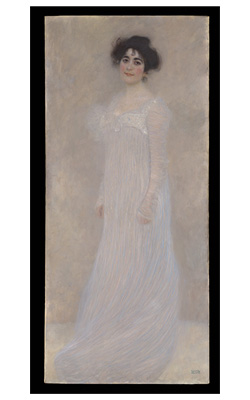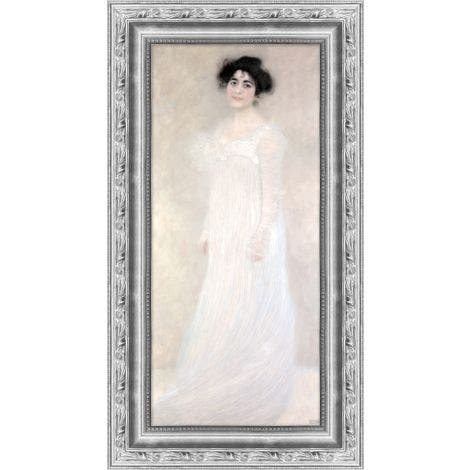Local Storage seems to be disabled in your browser.
For the best experience on our site, be sure to turn on Local Storage in your browser.
Serena

Our Inspiration: Serena Pulitzer Lederer
Gustav Klimt (Austrian, 1862–1918)
Oil on canvas, 75 1/8 x 33 5/8 in., 1899
Purchase, Wolfe Fund, and Rogers and Munsey Funds, Gift of Henry Walters, and Bequests of Catharine Lorillard Wolfe and Collis P. Huntington, by exchange, 1980 1980.412
Beautiful and stylish, Serena Pulitzer Lederer was a star of turn-of-the-century Viennese society. For this portrait, commissioned by her husband, the industrialist August Lederer, Klimt employed soft, sinuous brushstrokes to present Serena as an apparition in white. "An upright flower, long-stemmed…like a black tulip," enthused one critic when the painting was shown in 1901 at the 10th exhibition of the Vienna Secession—a group founded by Klimt and other artists four years earlier, with the aim of putting the city at the forefront of the international art world. The Lederers subsequently formed the finest collection of Klimt’s work in private hands.

Our Inspiration: Serena Pulitzer Lederer
Gustav Klimt (Austrian, 1862–1918)
Oil on canvas, 75 1/8 x 33 5/8 in., 1899
Purchase, Wolfe Fund, and Rogers and Munsey Funds, Gift of Henry Walters, and Bequests of Catharine Lorillard Wolfe and Collis P. Huntington, by exchange, 1980 1980.412
Beautiful and stylish, Serena Pulitzer Lederer was a star of turn-of-the-century Viennese society. For this portrait, commissioned by her husband, the industrialist August Lederer, Klimt employed soft, sinuous brushstrokes to present Serena as an apparition in white. "An upright flower, long-stemmed…like a black tulip," enthused one critic when the painting was shown in 1901 at the 10th exhibition of the Vienna Secession—a group founded by Klimt and other artists four years earlier, with the aim of putting the city at the forefront of the international art world. The Lederers subsequently formed the finest collection of Klimt’s work in private hands.



